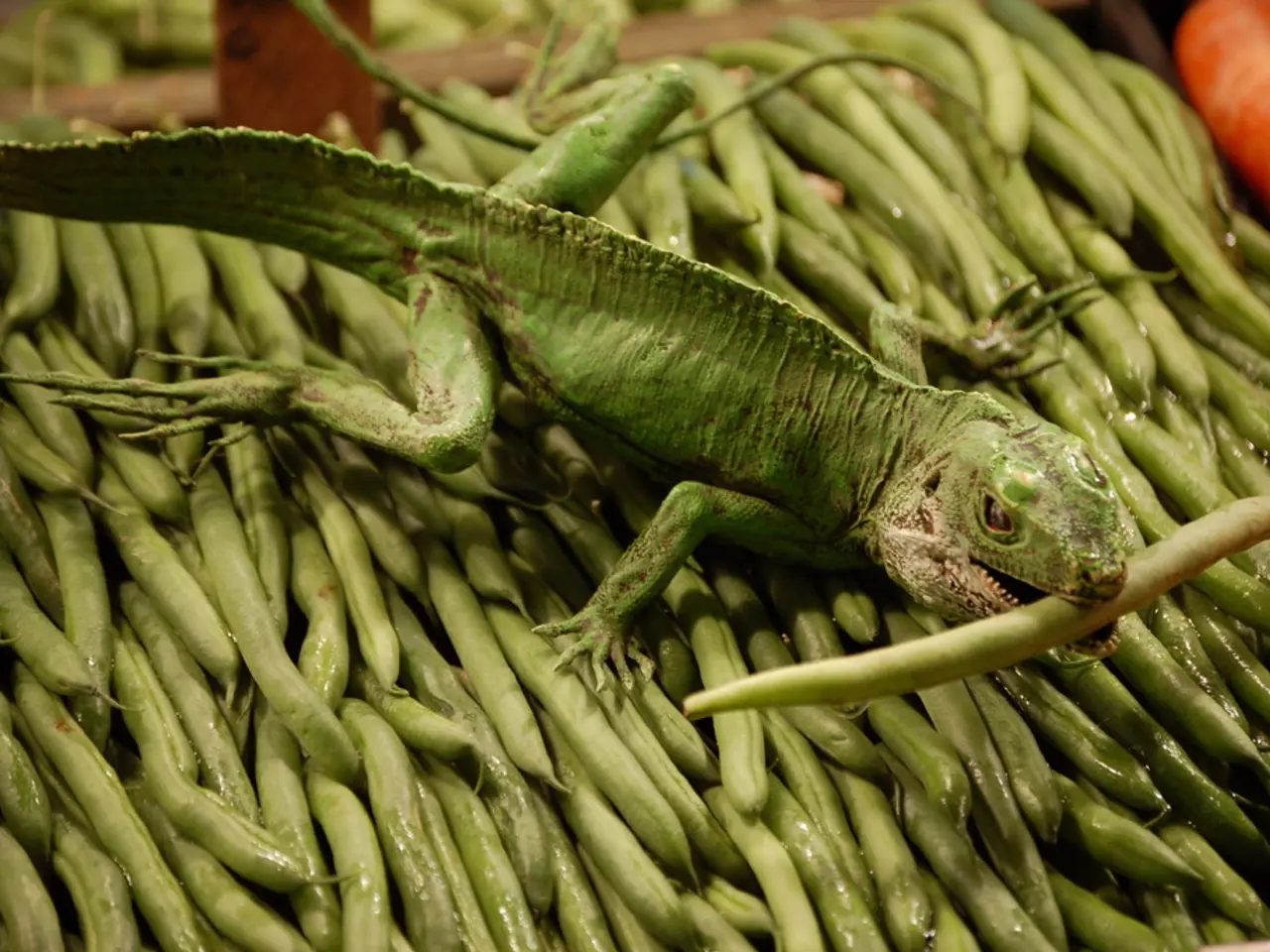Saudi Arabia's Distinct Reptile Icon: The Arabian Spiny-tailed Lizard
Protecting the Arabian Spiny-tailed Lizard: A Keystone Species in Desert Ecosystems
The Arabian spiny-tailed lizard, locally known as the "dhub" (Uromastyx aegyptius microlepis), is a unique and vital creature that inhabits the desert landscapes of Saudi Arabia, Jordan, Iraq, Syria, Egypt, and eastern Iran. This resilient reptile, renowned for its ability to survive extreme temperatures and long dry spells, plays a crucial role in maintaining the balance of the desert ecosystem.
The dhub's diet primarily consists of desert plants such as ramth, akrash, Al-'alanda, and sa'dan, along with small insects, ants, and locusts. Its foraging habits contribute significantly to vegetation regrowth, soil stabilization, and ground cover restoration, helping to combat desertification - a major environmental challenge in the Arabian Peninsula.
Recognizing the importance of this keystone species, awareness campaigns are being conducted, particularly among local communities with historical ties to dhub hunting. These initiatives aim to educate the public about the significance of protecting the dhub and preserving the desert ecosystem.
In addition to these campaigns, the National Center for the Conservation of the Arabian Spiny-tailed Lizard, in collaboration with environmental security forces, has intensified efforts to preserve the species. Regulations, penalties, and habitat monitoring are being implemented to ensure the long-term survival of the dhub. Strict enforcement of environmental laws, including a fine of SR3,000 ($800) for illegal hunting, has contributed to the stabilization and increase of dhub populations in protected areas.
The dhub's cultural significance extends beyond its ecological role. It holds a prominent place in Arab folklore, poetry, and oral tradition. Historically, it was an important food source for local communities, particularly during spring. However, overhunting in the past led to significant population declines in non-protected regions.
The tail of the dhub, known as "Al-'akrah," was considered a delicacy and believed to have medicinal benefits. A scientific analysis, however, found that the dhub meat contains high cholesterol levels, making it unsuitable for those with cardiovascular risks.
The burrows of the dhub serve as shelters and microhabitats for other desert species, and it shares a symbiotic relationship with scorpions. This resilient and diurnal (active during the day) lizard re-emerges when the temperature rises to around 35 degrees Celsius, basking in the sun near its burrow to warm up before resuming its daily activities. During cooler months, the dhub enters a state of hibernation, significantly reducing its metabolic rate.
Saudi Arabia is working with international conservation organizations such as the International Union for Conservation of Nature to ensure long-term sustainability for the dhub. By protecting this remarkable creature, we are not only preserving a vital part of the desert ecosystem but also safeguarding a piece of Arabian cultural heritage.
In conclusion, the Arabian spiny-tailed lizard is a keystone species that plays a critical role in the ecological health of the desert region. Its conservation is essential for maintaining the balance of the desert ecosystem and combating desertification. Through awareness campaigns, regulations, and international collaboration, efforts are being made to protect and preserve this remarkable creature for future generations.
References: [1] Unnamed Source. (2021). Arabian Spiny-tailed Lizard (Uromastyx aegyptius microlepis). Retrieved from www.arabianwildlifecenter.org/species/arabian-spiny-tailed-lizard
- The Arabian spiny-tailed lizard, a keystone species, is not only crucial for maintaining the balance of the desert ecosystem, but also holds a significant place in Arab culture and folklore.
- Saudi Arabia's initiatives to protect the Arabian spiny-tailed lizard involve regulations, penalties, and habitat monitoring, with a fine of SR3,000 ($800) for illegal hunting.
- The burrows of the Arabian spiny-tailed lizard serve as shelters for other desert species and share a symbiotic relationship with scorpions, providing microhabitats and ecological benefits.
- By collaborating with international conservation organizations, Saudi Arabia aims to preserve the Arabian spiny-tailed lizard, safeguarding a vital part of the desert ecosystem and a piece of Arabian cultural heritage.
- In addition to its ecological contributions, the Arabian spiny-tailed lizard's diet and metabolic behaviors make it an fascinating subject for study in fields like home-and-garden, lifestyle, and art, contributing to new insights in desert ecosystems and animal biology.




